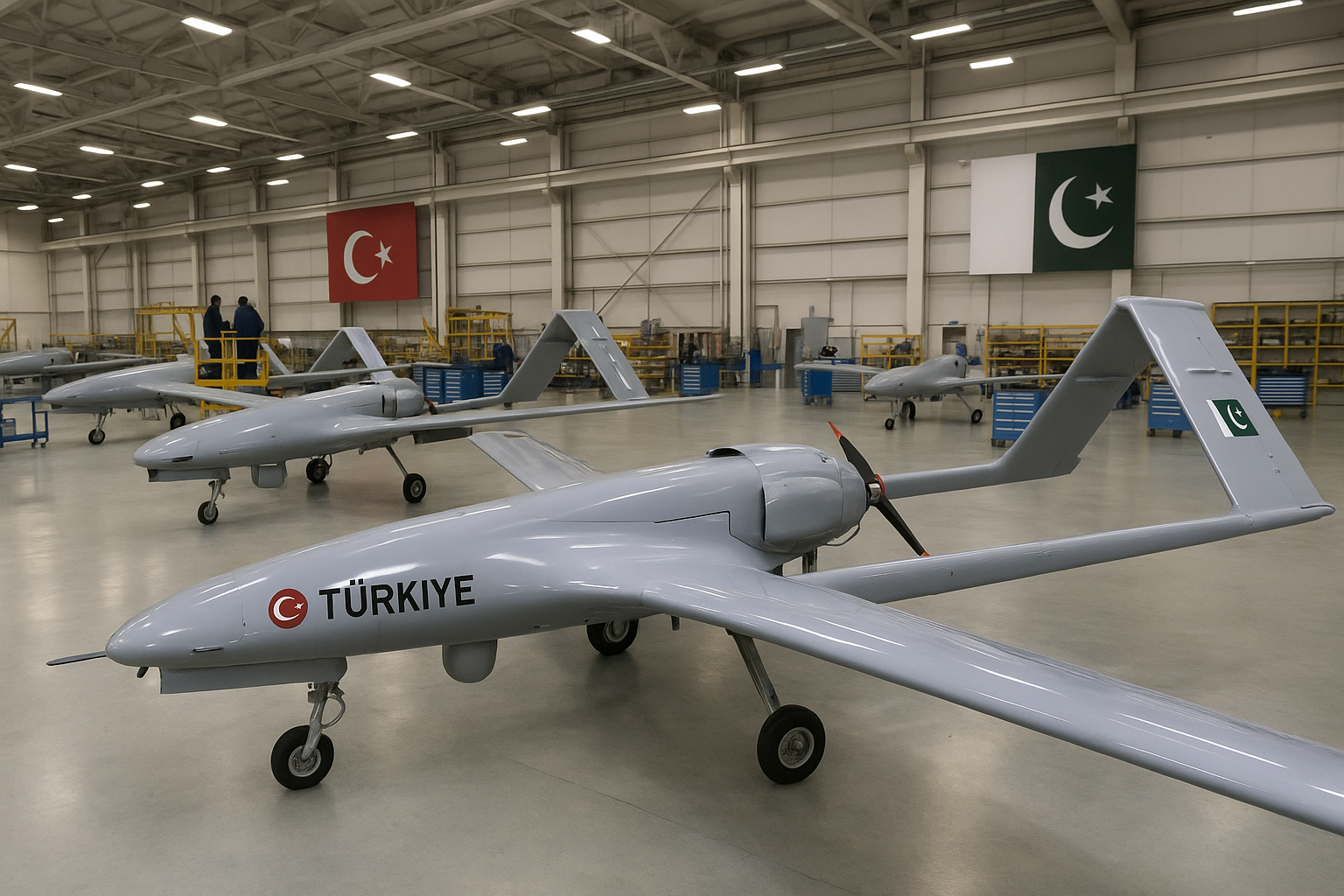China has a Stranglehold over the Pakistan Navy!

Atmanirbhar Bharat (Self-Reliant India) is a phrase popularised by Prime Minister Narendra Modi for economic self-sufficiency and national development during the pandemic. The term serves as an umbrella concept encompassing the government’s vision for India to become more efficient, competitive, and resilient while expanding its role in the global economy by developing India into a “global supply chain hub”.
Prime Minister Modi introduced the phrase ‘Atma Nirbhar’ in June 2014, referring to defence manufacturing for national security self-reliance. He reiterated this over the years; in 2018, he spoke of the need for India to make its weapons. The result of this initiative was evident during the recent Operation Sindoor, where India used a bouquet of indigenous weapon systems to not only hit the terror bases and military installations inside Pakistan but also to thwart Pakistani drones and missiles that were fired at India.
The performance of indigenous defence systems against Chinese and Turkish weapon systems stood out during Operation Sindoor. For instance, the indigenous Akash short-range Surface-to-Air systems (SAM) proved their capability. At the same time, the Chinese HQ-9 SAMs deployed by Pakistan failed to effectively intercept the precision-guided munitions launched by India. Approximately 15 indigenously made BrahMos missiles were launched in precision attacks that targeted critical infrastructure across 11 of 12 key Pakistani Air Force (PAF) bases, effectively paralysing its air defence and strike capabilities.
If we look at the impact of the Atma Nirbhar Bharat campaign on the Indian Navy only, we can see that numerous indigenously built weapon platforms have strengthened its arms. Be it the indigenously built aircraft carrier INS Vikrant, nuclear-powered ballistic missile submarines (SSBNs) INS Arihant and INS Arighat, or destroyers of Visakhapatnam-class (P-15B) and Kolkata-class (P-15A).
In addition, India is acquiring additional nuclear-powered attack submarines through Project 77. Project 75 (I) (also known as P-75I) is an Indian Navy initiative to build six advanced, conventional diesel-electric attack submarines, including fuel-cell-based Air Independent Propulsion (AIP). The project aims to bolster India’s naval capabilities, enhance indigenous submarine manufacturing, and reduce reliance on imports.
The Indian Navy will also induct nine to 10 warships between June and December 2025, significantly expanding its fleet. The first of these—the Anti-Submarine Warfare Shallow-Water Craft (ASW-SWC) Arnala—is scheduled for commissioning on 18 June at the Naval Dockyard in Visakhapatnam.
This would significantly bolster India’s naval fleet, and most of the ships to be commissioned have been made indigenously, officials said. In contrast, the Pakistani navy is heavily reliant on China for its naval assets and development, with China supplying a significant portion of Pakistan’s naval hardware and technology. This dependence is evident in various naval acquisitions, including submarines, frigates, and other types of naval equipment, as well as in the joint development of naval technologies.
China is Pakistan’s primary arms supplier, with a large percentage of Pakistan’s military equipment, including naval assets, originating from China. Pakistan has acquired Yuan-class submarines from China, with some submarines being built in China and others under license in Pakistan. Pakistan has also procured Type 054A/P frigates from China, further demonstrating the reliance on Chinese naval technology.
Pakistan and China have collaborated on projects like the JF-17 fighter jet, and this collaboration also extends to naval technology and equipment. However, Pakistan’s dependence on Chinese technology for its naval capabilities raises concerns about its strategic autonomy and, of course, the quality of the weapon systems. It acquired four Type 054A/P frigates from China in 2021. These frigates, equipped with modestly advanced radar systems and advanced weaponry, do not hold a chance in a full-scale naval battle with India.
Pakistan signed a $5 billion deal in 2016 with China to acquire Yuan-class Type 039/041 diesel submarines by 2028. Pakistan is all set to acquire eight such submarines from China, with four of them scheduled for delivery by the end of 2023. The first four subs are being built by China Shipbuilding Industry Corporation; the other four will be built in Pakistan by Karachi Shipyard and Engineering Works, further bolstering Pakistan’s indigenous capabilities.
But we have seen how India’s recent Operation Sindoor against Pakistan nullified Chinese weapons, including J-10C jets and advanced missile systems. The Indian Air Force (IAF) bypassed and jammed Pakistan’s Chinese-supplied air defence systems, completing the mission in just 23 minutes, demonstrating India’s technological edge. The Indian armed forces struck several air defence radar sites, among others, disabling the HQ-15 SAM system in Lahore.
It raises questions about the effectiveness of Chinese arms in actual warfare. Moreover, the absence of substantial technology transfer from China means that Pakistan’s own naval shipyards remain underdeveloped. Relying on foreign military aid, especially from China, poses significant risks for Pakistan. It is a known fact that China is not a “friend” of any country. It only believes in furthering its economic interests, just like its arch-rival, the US. Pakistan is primarily surviving on loans from foreign agencies and countries, such as China. It is in no position to return the loans.
Moreover, the much-touted China-Pakistan Economic Corridor (CPEC) is in doldrums. China is unhappy over the killings of its engineers in restive Balochistan working in the CPEC. It is quite likely that China may dump Pakistan if it fails to serve China’s purpose.
If the ties between China and Pakistan deteriorate, the latter’s naval operations could be severely hindered. The lack of indigenous maintenance capabilities for these advanced vessels could leave the Pakistan Navy vulnerable during a conflict. This will further affect Pakistan’s strategic autonomy, forcing Islamabad to become a puppet at the hands of Xi Jinping.







